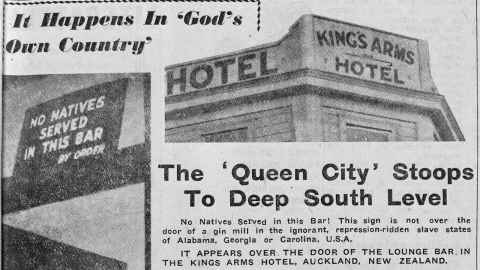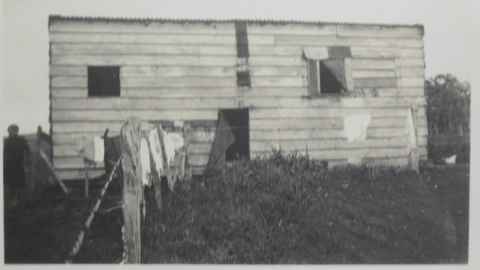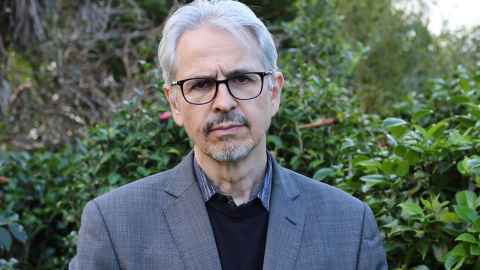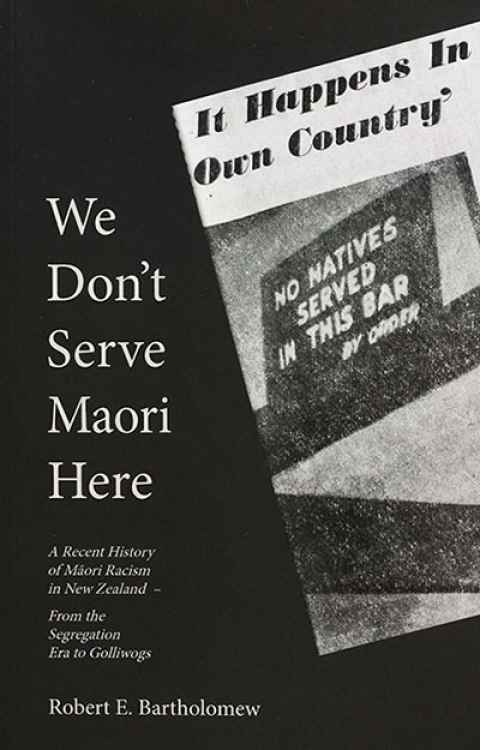Robert Bartholomew: shining light on a shameful era of Māori segregation
1 July 2021
Opinion: Robert Bartholomew says it’s time to educate about a dark chapter of Māori racial segregation. Because while history may not repeat, it speaks to the present.

New Zealand secondary schools do an excellent job of teaching about civil rights in the US and South Africa, but are reluctant to address similar issues in our own backyard. I know. For ten years I taught NCEA Level One History and, like most of my colleagues, I taught about civil rights in the US and South Africa.
There has never been a better time to correct this situation, with the new history curriculum being phased in next year. While it is important to be knowledgeable on global topics, it should not be at the cost of local history. It is time that the history New Zealand schools teach reflects Māori history.
One event that has been neglected is the apartheid-like racial segregation in a number of places, including South Auckland. It is a powerful story that reminds us of just how recent and profound discrimination against Māori was.
From 1925 to 1962, Māori in the South Auckland town of Pukekohe endured racism on a pervasive scale. For example, most barbers refused to cut Māori hair, they were segregated at the cinema and most bars would not serve them alcohol. In the 1950s, the exceptional barber who would cut Māori hair had a special Māori-only chair for fear of offending Pākehā customers.
In an interview with University of Auckland researcher Lesley Smith for a 1985 thesis, one Māori elder said: “Even if there was six of us waiting and no one in the Pākehā chairs and the other barber doing nothing, we still had to wait our turn for the Māori chair.” *
In the late 1950s, one establishment forced Māori women to sit in a field while alcohol was carried to them. Māori were often relegated to the back of the bus, and if the route from Pukekohe to Auckland was full and a Pākehā passenger boarded, the Māori passenger was forced to stand. At one point, milk bars banned Māori altogether.
A 1937 government report noted that not a single business in town let Māori use their public toilets – a practice that persisted into the early 1950s. From 1945 to 1952, the local school had segregated bathrooms and swimming pools.

One piece of history that has been neglected is the apartheid-like racial segregation in a number of places, including South Auckland.

In Pukekohe, there was an unwritten rule not to rent to Māori, forcing them to live at the market gardens on the outskirts of town in converted manure sheds, dilapidated shacks, lean-tos, and tents with no running water or indoor plumbing.
Racial segregation also occurred in other pockets across the country. In Hamilton in 1960, some shops refused to let Māori try on trousers. In Waitara and Kaitaia, there was segregation in the local theatres.
At Broadwood District High School in Northland, Māori students could not use the tennis courts at the same time as Pākehā. Segregated toilets were the rule of the day in Kaikohe, Tauranga and Kaitāia. In some places, there were separate maternity wards and, in one Northland hospital, Māori patients were given enamel mugs, while the Pākehā received chinaware. In 1959, Diana Thomas of Tokoroa wrote that while visiting the Papakura Hotel with her Māori husband four years earlier, they were told: “Māoris are not served here.”
She also recalled that while driving across the North Island, they “encountered many hotels where ‘Māoris’ were not admitted either to drink, dine or stay overnight”.
In Pukekohe, there was an unwritten rule not to rent to Māori, forcing them to live at the market gardens on the outskirts of town in converted manure sheds, dilapidated shacks, lean-tos, and tents with no running water or indoor plumbing. **
This tragic saga occurred for many on what had once been their ancestral lands and created a perfect storm for the spread of disease.
From 1925 to 1961, 73 percent of all Māori deaths in Pukekohe were infants and children who succumbed to a host of preventable conditions tied to poor housing and malnutrition. Measles, diphtheria, whooping cough and tuberculosis were the main culprits. In 1938 alone, 30 deaths were recorded; 29 were infants and children aged 14 and under.
Six years later, little had changed. A reporter for the Auckland Star wrote that: “One grower had 15 families totalling 50 people working for him and most of them lived in old manure sheds.”
Another family of 12 was crammed into a two-room shack and the deaths continued into the early 1960s.
Any discussion of the challenges faced by Māori today must include an understanding of how we got here. What transpired during the segregation period is an integral part of that story.
* Smith, Lesley (1985). Segregation and Housing in Pukekohe. Master’s thesis, Anthropology, University of Auckland, p. 43.
** Interview with Auckland Police Inspector F. Taylor who addressed a meeting of the Licensing Control Commission, April 1957. “Banned from Bar, Māori Women Drink Outside.” The New Zealand Truth, 16 April 1957, p. 19. Also referred to in Confidential – Race Relations in New Zealand, special report compiled by Department of Maori Affairs, Wellington, May 1961, p. 12.
Dr Robert Bartholomew is an honorary senior lecturer in the Department of Psychological Medicine. His books include No Māori Allowed (2020) and We Don’t Serve Māori Here (2021).
The views in this article reflect personal opinion and are not necessarily those of the University of Auckland.
